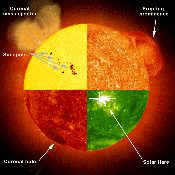 1. Many times larger than magnetic loops, prominences majestically
rise far above the Sun's surface.
1. Many times larger than magnetic loops, prominences majestically
rise far above the Sun's surface.
2. Bright explosions on the Sun --solar flares-- spew high-energy electromagnetic waves (such as X-rays) into space. 3. Dark coronal holes are portals through which the fastest solar wind escapes the Sun. 4. Small, dark regions on the Sun's surface, called sunspots, contain strong magnetic fields. |
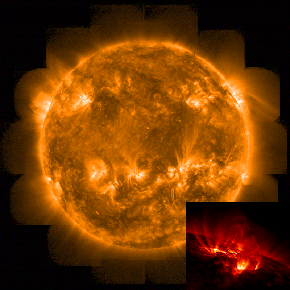
|
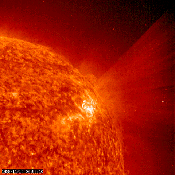 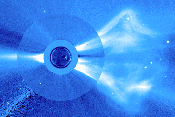 The Sun's corona can rip open and spew as much as 20 billion tons of material into space -- equivalent to the mass of 200,000 cruise ships. These explosions are known as coronal mass ejections (CMEs), the hurricanes of space weather. When a CME ploughs into the solar wind, it can create a shock wave that accelerates particles to dangerously high energies. Behind that shock wave, the CME expands into a huge cloud that engulfs planets in its path with plasma. Luckily for us, few CMEs are aimed at the Earth. If a CME erupts on the side of the Sun facing us, the results around Earth can be spectacular and sometimes hazardous. 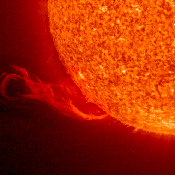 |
|||
 Sunspots are relatively dark patches on the Sun's bright surface. These regions of concentrated magnetic fields can last from several hours to several months. They appear as dark spots because they're cooler (4000 C) than the Sun's surrounding surface (6000 C). Sunspots tend to develop in groups, with some individual spots covering areas 20 times the diameter of Earth. |
Next: From Stonehenge to Satellites
Back: Living in the Atmosphere of the Sun
Front Page
Web Development: Theresa Valentine
Last Modified: 1/20/2000 TMV
